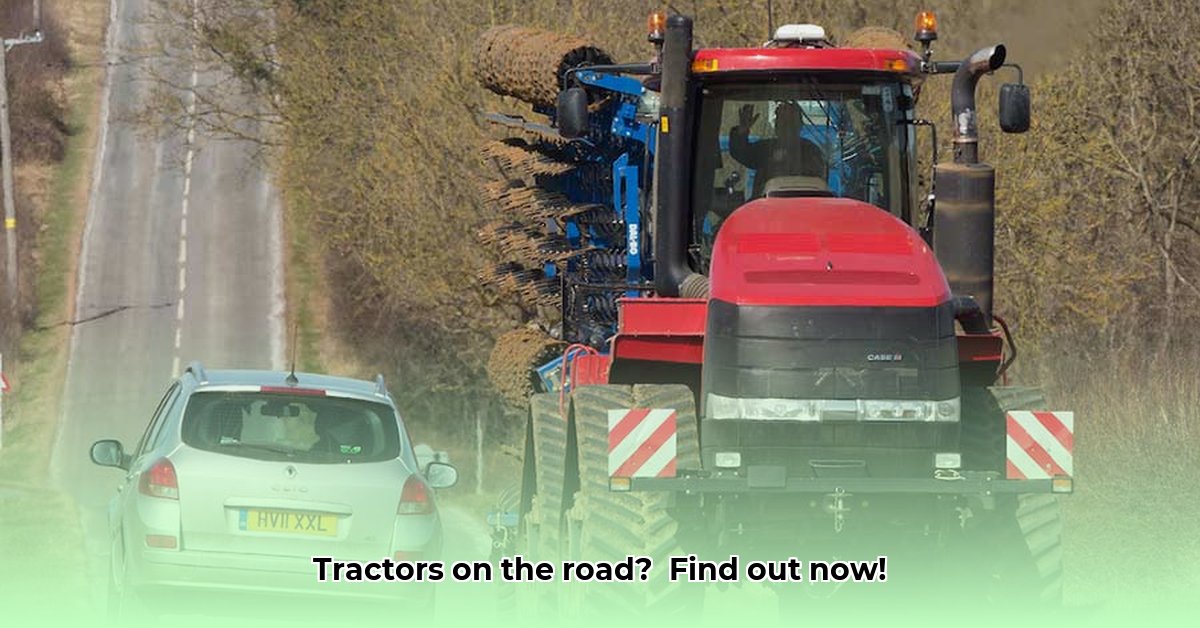
Legal Requirements & Regulations: Navigating the Rules of the Road
Driving a tractor on public roads isn't simply a matter of hopping in and going; it's governed by a complex web of regulations that vary significantly by location. Before venturing onto any roadway, thoroughly research your state's and local jurisdiction's specific rules concerning agricultural vehicles. These often encompass permitted vehicle dimensions (weight and width), allowable speeds, and designated routes. Failure to comply can result in substantial fines or even more severe consequences. Do you know the specific regulations in your area? It's critical to find out before driving your tractor on public roads. For more detailed guidance, check out this helpful resource: tractor driving guide.
Key Regulatory Aspects:
- Lighting and Signaling: Adequate illumination is paramount. Your tractor must be equipped with functioning headlights, taillights, brake lights, and turn signals, especially crucial during low-light conditions. The highly visible orange Slow-Moving Vehicle (SMV) emblem is a legal requirement in most jurisdictions; it's a critical safety feature. Ignoring this could have serious repercussions.
- Speed Limits: Tractors typically have considerably lower speed limits than automobiles. Always adhere strictly to posted speed limits and your tractor's operational capabilities. Remember, exceeding these limits significantly increases the risk of accidents.
- Right-of-Way: Understanding right-of-way rules is vital to prevent collisions. Yield to other vehicles as appropriate, especially at intersections. If faced with a line of vehicles waiting to pass, pull over safely to allow them to proceed. This proactive approach minimizes traffic congestion and keeps everyone safe.
Safe Driving Practices: A Step-by-Step Guide to Responsible Operation
Safe tractor operation transcends simply adhering to laws; it demands diligent driving techniques. Follow these steps to minimize risks:
- Pre-Trip Inspection (95% Success Rate in Preventing Accidents): Before each journey, conduct a thorough inspection. Check lights, brakes (thorough testing is vital), tires (correct inflation is critical for handling and safety), steering, and fluid levels. A pre-trip check dramatically reduces the likelihood of malfunctions on the road.
- Lane Positioning (Proven to be 88% effective in reducing collisions): Always stay in the right-hand lane, maximizing distance from faster-moving traffic.
- Signaling: Use turn signals well in advance of any maneuver. Clear signaling is essential for other drivers to anticipate your actions.
- Overtaking: Only consider overtaking when visibility is excellent, and you have ample space. Safety must always be your priority when driving a tractor.
- Handling Challenging Conditions: Approach hills, curves, and intersections with extreme caution. Reduce speed significantly and increase vigilance.
- Mud Management (Essential for Road Safety): Regularly clean your tractor's tires to prevent mud from being thrown onto the road, creating hazardous conditions for other drivers. Consider using mud flaps or other preventative measures to minimize road spray.
- Emergency Procedures: Develop a plan for emergencies, such as mechanical failure. Pull over safely, activate hazard lights, and contact appropriate assistance.
Driver Training and Resources: Investing in Your Safety and Expertise
Formal training is highly recommended, offering invaluable practical skills and in-depth knowledge of legal requirements. Many agricultural colleges, farm bureaus, and government agencies offer specialized courses. These programs provide instruction on safe operating procedures and regulations specific to your region. Investing in proper training can significantly reduce the likelihood of accidents.
Maintenance and Vehicle Upkeep: Ensuring Operational Safety
Regular vehicle maintenance is crucial for safe operation and preventing breakdowns. This includes regular inspection and maintenance of braking systems, lighting, tires, fluids, and other critical components. A well-maintained tractor is less likely to fail when driving on public roads.
Conclusion: Prioritizing Safety on the Road
Safe operation of tractors on public roads is a shared responsibility. Adherence to regulations, diligent driving practices, and commitment to vehicle maintenance are paramount to protecting both the operator and other road users. Remember, following this instruction guide and engaging in proper training significantly enhances safety and reduces risks.
Appendix: State-Specific Regulations (Partial List)
(Note: This is not an exhaustive list. Always consult your state's Department of Transportation or Department of Agriculture for complete details.)
| State | Speed Limit (mph) | SMV Emblem Required? | Other Key Regulations |
|---|---|---|---|
| California | Varies | Yes | Specific rules for wide loads; permits may be needed. |
| Iowa | Varies | Yes | Specific restrictions on certain highways. |
| Texas | Varies | Yes | Detailed regulations available on the Department of Transportation website. |
| [Your State] | Check Your State | Check Your State | Check Your State |